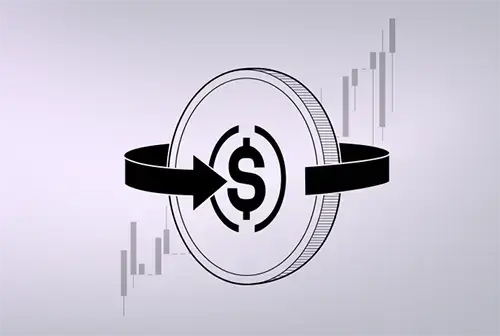In the midst of strategizing, we decide the outcome from a thousand miles away. Hello everyone, I am Lin Chao, a global financial market observer, focusing on cryptocurrency market analysis, bringing you the most in-depth trading information analysis and technical teaching.

Recently, in Lin Chao's private messages, there have often been questions like, "Teacher Lin, what is your contract win rate?" When faced with such questions, Lin Chao often doesn't know how to respond. It's not that he lacks confidence in his win rate, but rather that this question cannot be judged in isolation. To achieve long-term stable profits in trading, both the profit-loss ratio and win rate are extremely important; one cannot bypass either. However, these two are almost inversely related in trading: the higher the profit-loss ratio is set, the lower the win rate will naturally be, and the lower the profit-loss ratio is set, the higher the win rate will naturally be.

So, which of these two factors, the profit-loss ratio or the win rate, is more important? Which aspect should be prioritized when formulating a trading strategy? Lin Chao believes it depends on the type of market you are primarily participating in—based on the entry logic of the trading strategy, the market can be roughly divided into three categories: trending market, sideways market, and reversal market.
When engaging in trend-following trading (going with the trend), since the trend has usually progressed a certain distance by the time we enter, the profit space left for us is relatively limited, and we cannot set our profit-loss ratio too high, typically between 1:1 and 2:1. Because market trends have inertia, the win rate for trend trading is often relatively high. This is also one of the biggest advantages of trend trading. This is known as short-frequency trading, where we control the profit-loss ratio while entering and exiting the market multiple times.

In sideways trading, the profit-loss ratio depends on the amplitude of the sideways fluctuations. The larger the amplitude of the sideways fluctuations, the further the profit range available to us; conversely, the smaller the amplitude, the closer the profit range. We typically place the take-profit position near the opposite boundary of the sideways range and the stop-loss position not far from the breakout point, so the profit-loss ratio is relatively clear, with not much room for maneuver. The win rate in sideways trading is related to the stability of the sideways market. In sideways trading, it can be said that the win rate and profit-loss ratio are equally important; we need to find a balance between the two because once a one-sided breakout or reversal occurs in a volatile market, it is very likely to go in the opposite direction, leading to consecutive losses and affecting our mindset.

Finally, let's talk about reversal trading, commonly known as bottom fishing, which is a trading model favored by beginners. However, in reality, reversal trading is the most difficult trading model. When engaging in reversal trading, due to the inertia of market trends, the win rate for reversal trading is usually not very high; in most cases, it is difficult for us to precisely hit the point of the rebound, resulting in a very low win rate for reversal trading. The advantage of reversal trading is that when the market successfully completes a reversal, the new trend is often still in its early stages, and the market price is usually at a relatively ideal position, leaving us with a large profit space. In reversal trading, the profit-loss ratio can typically be set very high—high profit-loss ratio is the core advantage of reversal trading. However, many beginners, while engaging in reversal trading, bear a low win rate and, after the reversal is completed, often fail to hold onto their positions, resulting in both win rate and profit-loss ratio being at a low level—this violates the principle of risk and reward equivalence. This is also a significant reason why many beginners cannot profit when bottom fishing.

Therefore, when engaging in reversal trading, it particularly tests our grasp of "market feel." We often hear dialogues like, "I feel the market has hit the bottom" or "I feel it has peaked," etc. However, feelings are actually the most unreliable aspect of trading; your feelings not only fail to provide a market advantage but may also lead you into traps set by the market.
Many people believe that cultivating "market feel" means constantly trading based on feelings. In fact, it is not. What Lin Chao considers market feel refers to the process of quickly filtering market conditions that align with the trading strategy—once I become sufficiently proficient in a strategy, it can skip the cumbersome analysis and explanation process, instantly identifying trading opportunities that match the current fundamentals. I refer to this quick grasp of the market as "market feel," which is essentially the skilled application of a trading strategy, rather than simply trading based on feelings.

Trading is an industry that pursues extreme rationality; one could say that the most unreliable analytical tool in this field is your feelings. If trading novices can realize this and spend more time studying market advantages and building their own trading strategies, they can find a balance between profit-loss ratio and win rate in trading, and suggest a trading logic that belongs to them.
The success of investment depends not only on choosing good targets but also on when to buy and sell. Preserving capital and making good asset allocation is essential for steady progress in the ocean of investment. Life is like a long river flowing into the sea; what determines victory or defeat is never the gains and losses of a single pass or the profits and losses of a moment, but the confluence of many rivers!
The global market is ever-changing, the world is a whole; follow Lin Chao to gain a top-tier global financial perspective.

Real-time consultation, public account: Lin Chao on Cryptocurrency
免责声明:本文章仅代表作者个人观点,不代表本平台的立场和观点。本文章仅供信息分享,不构成对任何人的任何投资建议。用户与作者之间的任何争议,与本平台无关。如网页中刊载的文章或图片涉及侵权,请提供相关的权利证明和身份证明发送邮件到support@aicoin.com,本平台相关工作人员将会进行核查。



